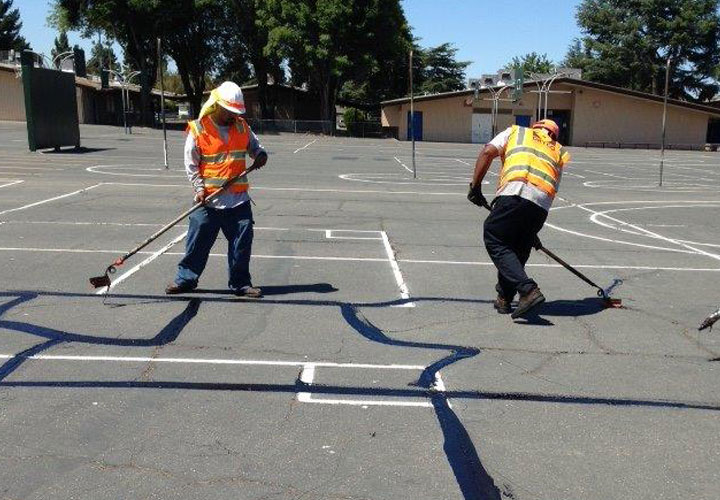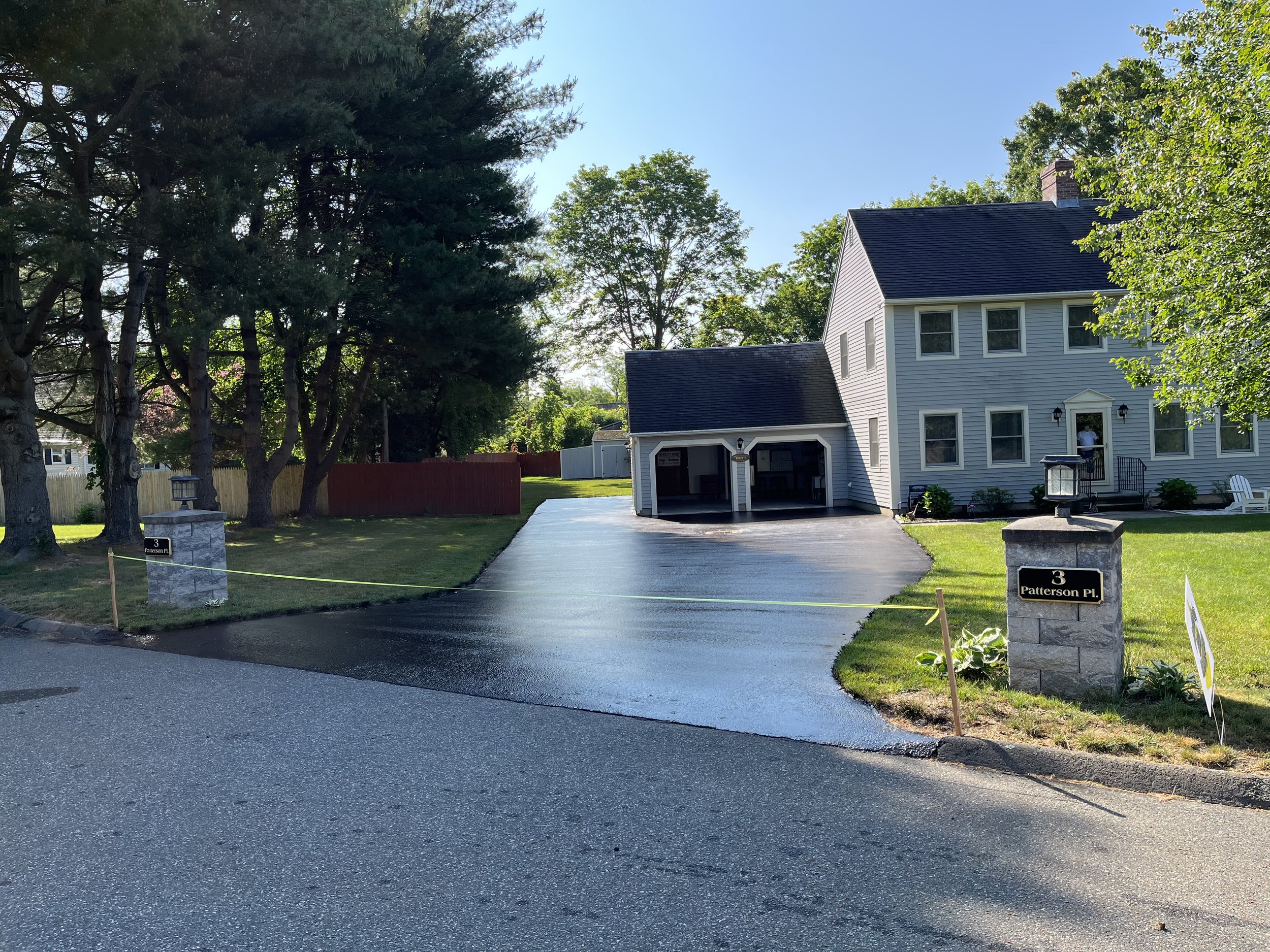Warm Mix Asphalt: A Lasting Solution for Sidewalk
Warm Mix Asphalt (HMA) has emerged as a leading lasting option for pavement remedies, providing a myriad of cutting-edge innovations and environmental benefits. As the need for environment-friendly construction methods grows, discovering the nuances of HMA's sustainability can give useful understandings right into the future of pavement options.
Environmental Advantages of Hot Mix Asphalt

In Addition, Warm Mix Asphalt assists to mitigate metropolitan heat island impacts. Its dark shade takes in sunshine, minimizing the quantity of heat mirrored back right into the atmosphere compared to lighter-colored pavements. This can decrease ambient temperatures in city areas, lowering the demand for a/c and ultimately decreasing power consumption.
Additionally, Hot Mix Asphalt adds to improved stormwater administration. Its porous nature enables water to charge and penetrate the pavement groundwater supplies, reducing drainage and the risk of flooding. These environmental advantages make Warm Mix Asphalt a sustainable choice for paving roadways and highways.
Energy Performance in HMA Manufacturing
Is energy performance an essential variable in the manufacturing of Hot Mix Asphalt (HMA)? Power plays a substantial role in the production of HMA, impacting both cost and ecological sustainability. One crucial element of energy performance in HMA manufacturing is the use of cozy mix asphalt (WMA) innovations.
Moreover, advancements in plant innovations have actually led to more energy-efficient HMA production procedures. By enhancing power use in HMA production, the sector can lower its carbon impact while keeping premium sidewalk products.
Recyclability of Hot Mix Asphalt
The recyclability of Hot Mix Asphalt (HMA) is a pivotal element of its sustainability and lasting environmental effect. HMA is just one of the most recycled materials in the USA, with over 100 million lots of redeemed asphalt sidewalk (RAP) being reused annually in brand-new pavement building. Reusing HMA offers several environmental advantages, such as reducing the need for virgin materials, decreasing power consumption during production, and reducing the quantity of waste sent out to landfills.
The process of reusing HMA entails crushing the existing pavement, crushing it right into smaller sized items, and mixing it with new aggregate and asphalt binder to create a recycled mix. On the whole, the recyclability of HMA plays a substantial function in promoting sustainable techniques within the sidewalk industry.

Long-Term Efficiency of HMA
Asphalt pavements show toughness and strength his explanation over an extensive duration, mirroring the long-term efficiency of Hot Mix Asphalt (HMA) The longevity of HMA can be associated to its capability to stand up to hefty web traffic lots, severe weather conditions, and the effects of aging. Studies have actually shown that well-designed and appropriately built HMA pavements can last for 20 years or more with regular maintenance. The key to making best use of the lasting efficiency of HMA lies in using top notch materials, complying with best practices in construction, and implementing reliable upkeep methods. Appropriate drainage, regular assessments, and timely repair work are essential for maintaining the architectural stability of HMA pavements with time. Furthermore, improvements in HMA innovation, such as the use of polymer-modified binders and cozy mix asphalt, have even more enhanced the resilience and long life of HMA pavements. By prioritizing top quality building and maintenance practices, HMA continues to confirm itself as a affordable and lasting service for durable pavement infrastructure.

HMA: Durability and Sustainability
Demonstrating both sturdiness and sustainability, Hot Mix Asphalt (HMA) has actually become a cornerstone in the building and construction of resilient pavement infrastructures - angled parking. HMA's toughness comes from its capacity to hold up against heavy loads, harsh climate condition, and high web traffic volumes, making it a dependable selection for highways, freeways, and airport paths. The make-up of HMA, which normally consists of aggregates, binder, and filler, plays an important function in boosting its durability and resistance to damage
Furthermore, HMA's sustainability additional resources depends on its recyclability and see here now energy-efficient manufacturing procedure. The ability to reuse reclaimed asphalt pavement (RAP) in new HMA blends reduces the need for virgin products and minimizes the environmental impact of sidewalk building and construction and upkeep. Furthermore, the power efficiency of creating HMA lies in its reduced blending temperatures contrasted to various other pavement materials, causing decreased power consumption and greenhouse gas exhausts.
Final Thought
In conclusion, warm mix asphalt (HMA) supplies a lasting solution for pavement with its eco-friendly attributes. HMA's recyclability, power performance in manufacturing, and long-lasting resilience make it an environment-friendly selection for roadway building and construction. By saving all-natural sources, reducing waste, and reducing greenhouse gas emissions, HMA plays an essential role in advertising sustainability in infrastructure growth. Its capability to alleviate city warmth island results better emphasizes its significance in producing resistant and eco mindful pavement systems.
HMA is one of the most recycled materials in the United States, with over 100 million loads of reclaimed asphalt pavement (RAP) being reused annually in brand-new pavement building and construction.The process of recycling HMA entails grating the existing pavement, squashing it into smaller sized pieces, and blending it with brand-new accumulation and asphalt binder to create a recycled mix.Asphalt sidewalks demonstrate durability and durability over an extended duration, reflecting the lasting performance of Warm Mix Asphalt (HMA) Additionally, innovations in HMA innovation, such as the usage of polymer-modified binders and warm mix asphalt, have actually further boosted the resilience and long life of HMA pavements. The capability to reuse recovered asphalt pavement (RAP) in brand-new HMA mixtures minimizes the need for virgin materials and lessens the environmental effect of sidewalk construction and upkeep.